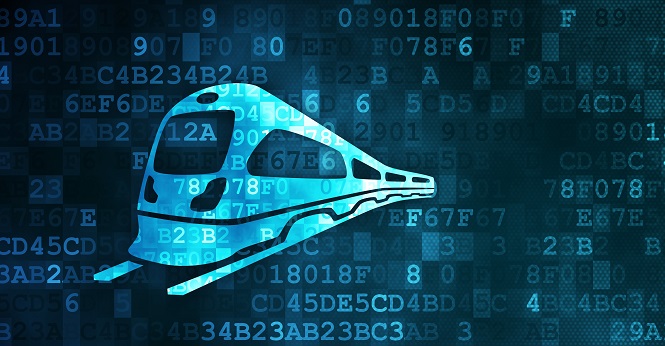
Rail systems are finally making the digital transformation everybody’s been talking about for several years.
In the United Kingdom, for example, the Thameslink now runs 24 trains an hour – an increase of 50 percent in its capacity compared to years past. Making this possible took a lot of work on the back-end. Rail carriers consolidated their control centers and built modern, computerized facilities that leverage data analytics to develop intelligence about on-time performance, delays, and overall ridership per time-of-day and season.
Rail carriers are also deploying digital enterprise asset management (EAM) systems to reduce maintenance time and improve overall productivity. These systems precisely target what needs repairs and provide an immediate and accurate status of rail stock and parts to maintenance crews. Digital EAM technology can also monitor an inventory of trains in rail yards more efficiently, ensuring more predictive maintenance as opposed to simply repairing trains when they break down.
Rail companies have also invested in sleek electric trains that run faster, with fewer carbon emissions, and are easier for drivers to manage. Regenerative braking technology, which captures the energy expended by trains as they slow down and reuses it, not only delivers a smoother ride – through fewer stops and starts – but improves energy efficiencies and further reduces pollution.
Mobile ticketing and more
Digital technologies also offer major benefits to passengers, such as mobile ticketing, the ability to leverage Alexa and other digital assistants for train schedules and weather forecasts, and automatic refunds when trains are late or offline.
The results have been impressive. The UK’s Office of Rail and Road reports that rail passenger journeys in Great Britain in 2018-19 reached a record high of 1.759 billion. They increased by 3 percent compared to the previous year, driven by a 3.9 percent increase in the London and South East sector. Total passenger revenue growth also hit 10.3 billion pounds, its highest revenue since 2014-2015. Of course, increased ridership can be attributed to a number of factors, including evolving consumer attitudes toward rail’s eco-friendly advantages or time and cost savings compared to car travel, but it’s clear that digital is making traveling by train easy, cost-effective and gentle on the environment.
Need for cybersecurity

The shift to digital from paper-based systems requires that rail carriers take a much more focused look at their cybersecurity postures. They have to put in place security awareness programs for the rank-and-file staff and also communicate with passengers on ways to protect their digital identities as they purchase train tickets online and depend on their mobile phones to manage their busy travel schedules.
On the IT staff side, rail carriers need to put solid patch management programs in place so the back-end software runs securely and threat actors have fewer opportunities to inject malware. Most security experts will say that with a solid patch management program and basic security awareness around email phishing, organizations can prevent the vast majority of cyberattacks.
Full speed ahead

While rail carriers have not moved as quickly into digital as airlines and rideshare companies such as Uber and Lyft, they have made some great progress.
As we head into the 2020s there’s really no turning back. Change comes slowly, but with investments the industry has made in back-end technology and analytics, mobile apps and faster electric trains, we’re about to turn the corner into the digital future.


